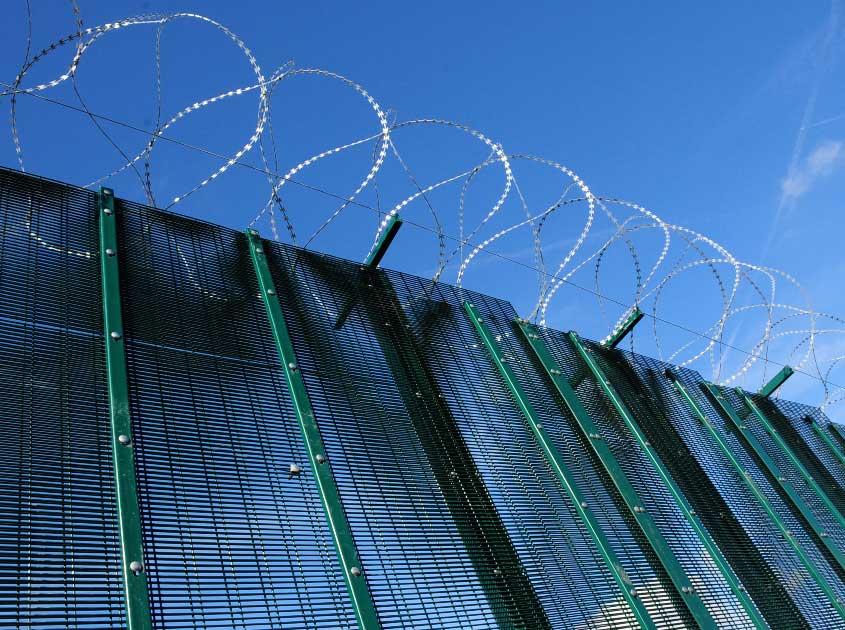- Home
- About Us
- Products
- Service
- Project
- News
- Contact Us
Pulished on Apr. 28, 2024
An airport fence serves as a critical security measure to protect airports and ensure the safety of passengers, aircraft, and personnel. It plays a crucial role in preventing unauthorized access, controlling perimeter breaches, and deterring potential threats. This article explores the importance, features, and functions of airport fences in maintaining a secure and efficient airport environment.
1: Importance of Airport Fences
Airport fences are essential for maintaining the integrity of airport perimeters and controlling access points. They provide a physical barrier that helps deter intruders, unauthorized personnel, and wildlife from entering restricted areas. By securing the airport boundaries, these fences contribute to the overall safety and security of air travel.
2: Features of Airport Fences
Airport fences are typically designed to be robust, durable, and resistant to tampering or climbing attempts. They are constructed using high-strength materials such as galvanized steel or aluminum, which can withstand harsh weather conditions and provide long-lasting protection. These fences often feature anti-cut and anti-climb measures, including barbed wire, razor wire, or spiked tops, to further enhance security.
3: Functions of Airport Fences
The primary function of airport fences is to create a secure perimeter around the airport facilities. They help control access points by providing designated entry and exit gates for authorized personnel, vehicles, and airside operations. Additionally, airport fences contribute to wildlife control, preventing animals from entering runways and posing a risk to aircraft during takeoff and landing. The fences also serve as a visual deterrent, signaling that the airport area is protected and unauthorized access is prohibited.
4: Integration with Security Systems
Airport fences are often integrated with advanced security systems to enhance surveillance and detection capabilities. These systems may include video surveillance cameras, intrusion detection sensors, and access control systems. Integration allows for real-time monitoring, quick response to potential breaches, and effective coordination with security personnel.
5: Compliance with Aviation Regulations
Airport fences must meet specific standards and regulations set by aviation authorities to ensure the safety and security of the airport environment. These regulations may include height requirements, materials specifications, and anti-climbing measures. Compliance with these standards is crucial to maintaining the integrity of the airport perimeter and preventing unauthorized access.

Conclusion:
Airport fences play a vital role in safeguarding airports, protecting passengers and aircraft, and maintaining the overall security of air travel. With their robust construction, anti-climb features, and integration with advanced security systems, these fences provide a physical barrier that deters unauthorized access and enhances the effectiveness of airport security measures. By adhering to aviation regulations and incorporating modern security technologies, airport authorities can ensure a safe and secure environment for travelers, employees, and aircraft operations.
What Are the Common Applications of Wire Mesh Fence in Construction?
Pulished on Dec. 15, 2025
Reasons Behind the Growing Demand for Security Fencing in the Middle East
Pulished on Nov. 28, 2025
Characteristics of Fence Demand in South American Construction Projects
Pulished on Nov. 28, 2025
How Middle East Distributors Can Quickly Evaluate the Quality of Wire Mesh Suppliers
Pulished on Nov. 24, 2025
What Type of Metal Fencing Is Best for Construction in the Middle East?
Pulished on Nov. 18, 2025
358 High-Security Fencing – Maximum Protection for Sensitive Sites
Pulished on Oct. 27, 2025
Welded Wire Mesh Fencing – Durable and Efficient Solutions for Global B2B Buyers
Pulished on Oct. 27, 2025
Cattle Fencing – Strong, Reliable, and Cost-Effective Solutions for Livestock Management
Pulished on Oct. 22, 2025
What Are the Common Applications of Wire Mesh Fence in Construction?
Pulished on Dec. 15, 2025
Reasons Behind the Growing Demand for Security Fencing in the Middle East
Pulished on Nov. 28, 2025
Characteristics of Fence Demand in South American Construction Projects
Pulished on Nov. 28, 2025
How Middle East Distributors Can Quickly Evaluate the Quality of Wire Mesh Suppliers
Pulished on Nov. 24, 2025
What Type of Metal Fencing Is Best for Construction in the Middle East?
Pulished on Nov. 18, 2025
358 High-Security Fencing – Maximum Protection for Sensitive Sites
Pulished on Oct. 27, 2025
Welded Wire Mesh Fencing – Durable and Efficient Solutions for Global B2B Buyers
Pulished on Oct. 27, 2025
Cattle Fencing – Strong, Reliable, and Cost-Effective Solutions for Livestock Management
Pulished on Oct. 22, 2025






 EN
EN SP
SP FR
FR
